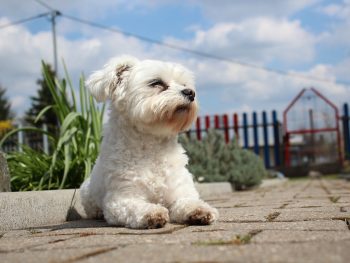The Maltese, known for their luxurious white coat and affectionate nature, are a popular toy breed. This article delves into the adaptability of Maltese dogs in cold weather, assessing their physical characteristics, potential risks, and necessary care measures to ensure their safety and comfort during colder months.
Understanding the Maltese Breed’s Cold Weather Tolerance
Maltese dogs, originally from the warm Mediterranean climate of the island of Malta, have a beautiful, long, silky coat that offers some degree of warmth. However, this single-layered coat is more about elegance than insulation, making it less equipped for cold weather than breeds with thicker, double-layered coats. Understanding their tolerance to cold is essential for owners to provide adequate care in winter.
Risks Associated with Cold Weather for Maltese Dogs
Maltese dogs are small and can be susceptible to cold temperatures. Their thin coat does not provide significant protection against severe cold, making them prone to hypothermia and discomfort in low temperatures. During winter, particular attention should be paid to prevent these risks and keep them healthy and comfortable.
Essential Winter Care for Maltese Dogs
Proper winter care is crucial for keeping Maltese dogs safe during cold months. This includes providing warm, insulated bedding, ideally in a draft-free area of the house. Outdoor time should be limited in freezing weather, and owners might consider using sweaters or coats for their Maltese during walks to provide additional warmth.
Nutritional Needs of Maltese in Cold Weather
The nutritional requirements of Maltese dogs may slightly increase in cold weather to compensate for the extra energy expended to stay warm. However, due to their small size and lower activity levels in winter, careful monitoring is needed to avoid overfeeding and potential weight gain. Fresh, unfrozen water should always be available to ensure proper hydration.
Exercise and Mental Stimulation for Maltese in Winter
Even in cold weather, Maltese dogs require regular exercise and mental stimulation. Indoor play and short, brisk walks can keep them active and prevent boredom. It’s essential to keep them engaged with interactive toys and training exercises, mainly when outdoor conditions are unfavorable for prolonged activities.
Recognizing and Responding to Cold-Related Health Issues
Maltese owners should be aware of signs of cold-related distress, such as shivering, lethargy, or reluctance to go outdoors. Smaller breeds like the Maltese can be more susceptible to cold and may require extra care. If any concerning symptoms are observed, consulting with a veterinarian is recommended.
Social Needs and Indoor Activities for Maltese During Winter
Maltese dogs are known for their affectionate and friendly nature. Ensuring they continue to receive attention and interaction during the colder months is vital for their emotional well-being. Indoor activities encouraging play and bonding can help keep them happy and emotionally satisfied.
Preparing Your Home for a Maltese in Winter
Creating a comfortable and warm indoor environment is essential for Maltese dogs during winter. This includes providing a cozy bed, ideally in a warm part of the house. Regular grooming is also important to maintain the health and condition of their coat, which is crucial for their overall comfort in colder weather.
Conclusion: Keeping Your Maltese Safe and Comfortable in Cold Weather
In conclusion, while Maltese dogs can adapt to colder climates, they require careful attention and protection from the cold. Understanding their needs and providing appropriate care, including shelter, clothing, and nutrition, will ensure they remain comfortable and healthy throughout the winter. These charming and elegant dogs can enjoy the colder months safely and comfortably with thoughtful preparation.
Frequently Asked Questions About Maltese and the Climates They Thrive In
The post Are Maltese Safe in Cold Weather? appeared first on iHeartDogs.com.

